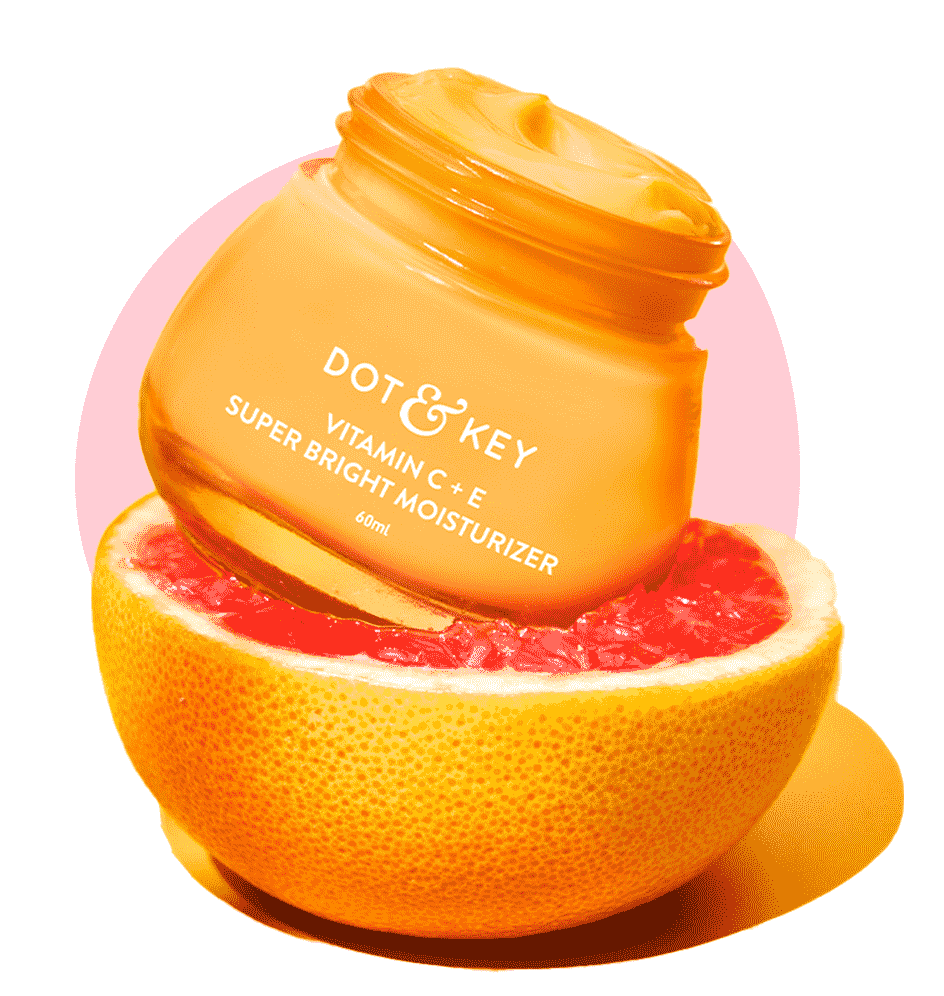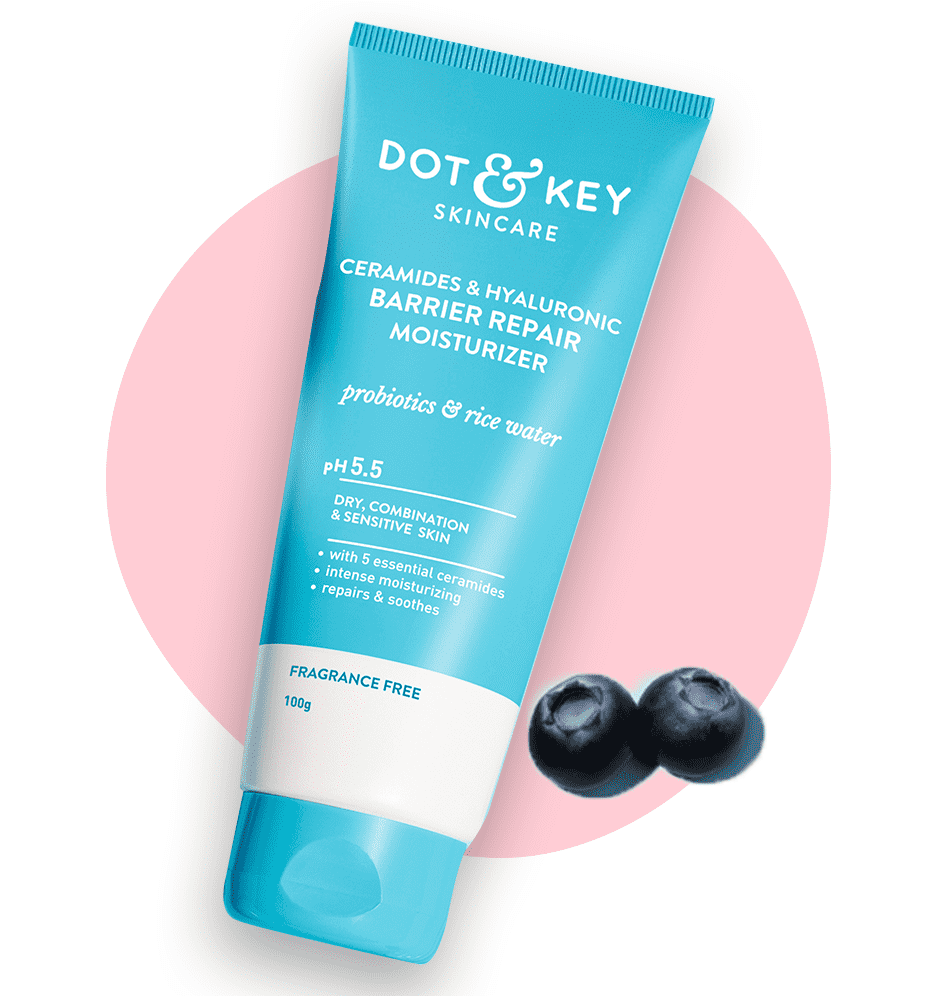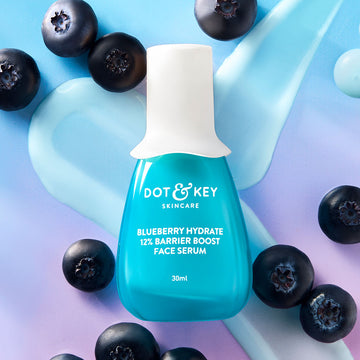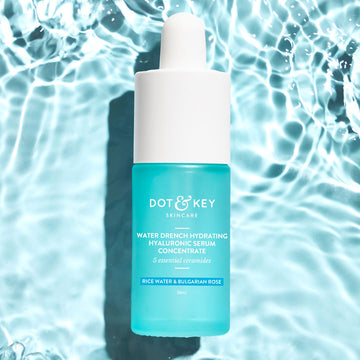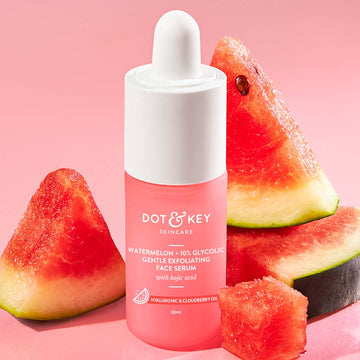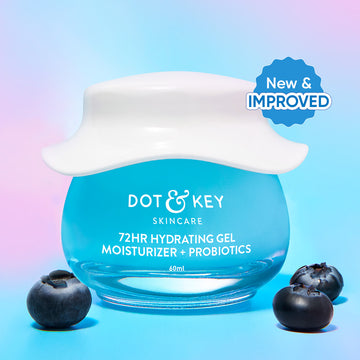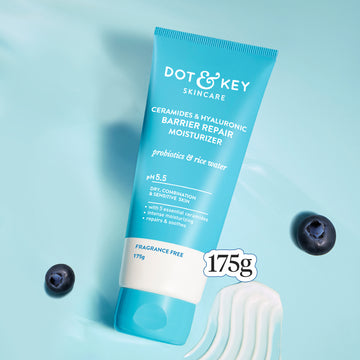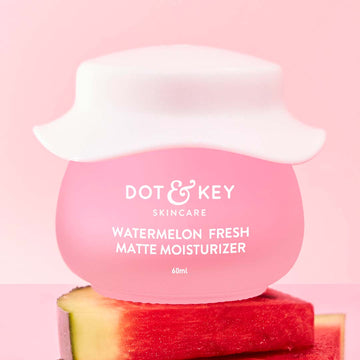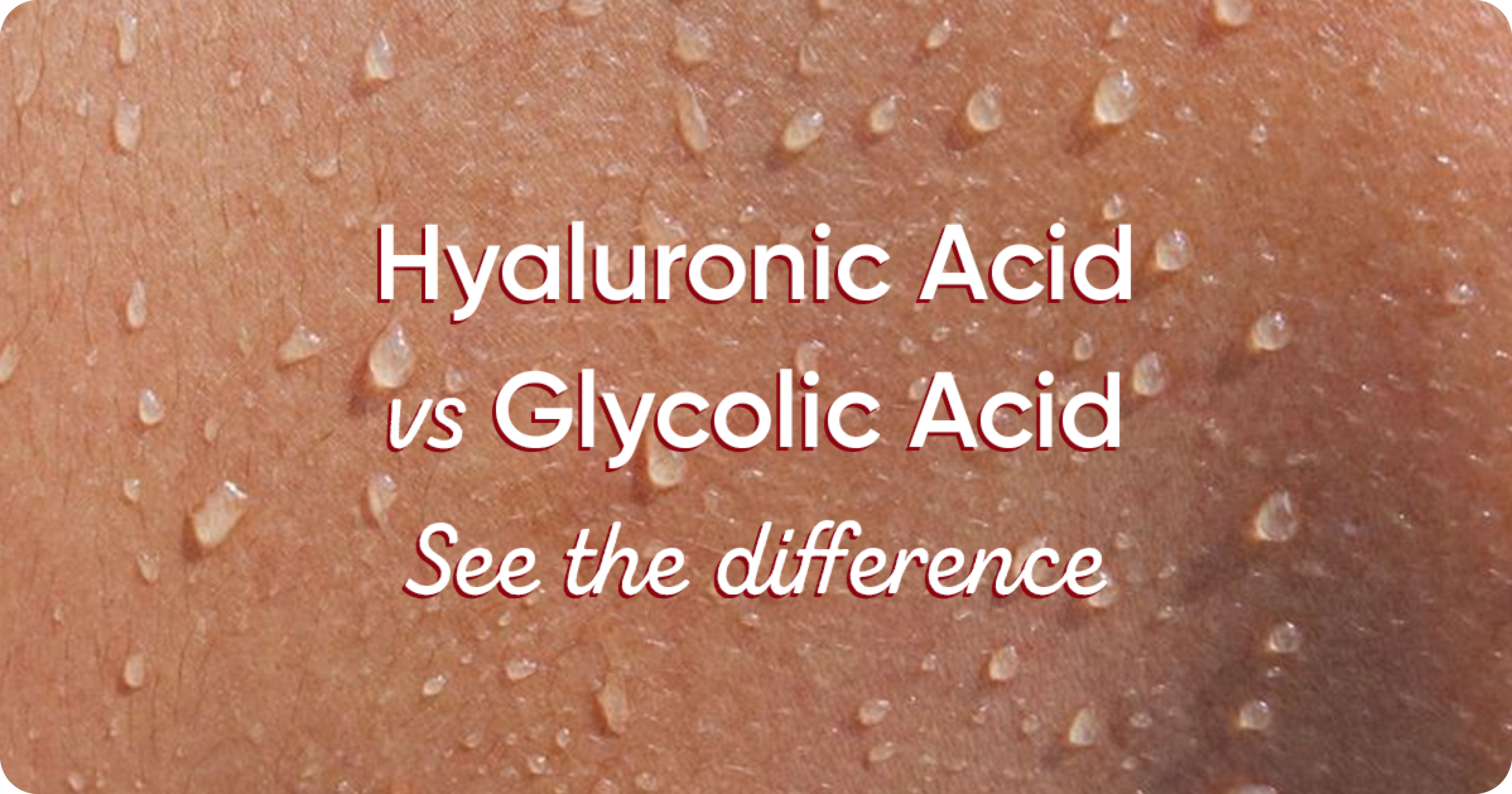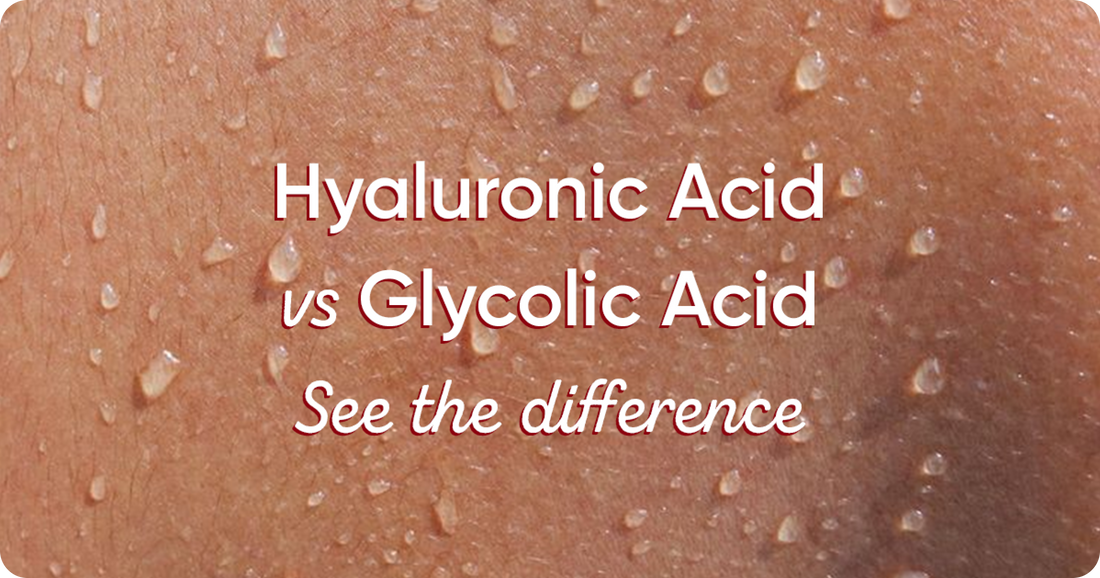
In the world of skincare, two powerhouse ingredients often steal the spotlight—hyaluronic acid and glycolic acid. But don’t let the word "acid" fool you—they have completely different roles! One is a hydration hero, drenching your skin in moisture, while the other is an exfoliation expert, revealing a fresh, glowing complexion.
So, which one should you pick? Or can you use both for the ultimate glow-up? Let’s break it down and find your perfect skincare match!
What is Hyaluronic Acid?
Hyaluronic acid (HA) is a naturally occurring humectant that attracts and retains water in the skin. It’s known for providing deep hydration and making the skin appear plumper and more radiant.
Key Benefits of Hyaluronic Acid:
- Hydrates Skin: Retains moisture for softer, smoother skin.
- Improves Elasticity: Plumps skin, reducing the appearance of fine lines.
- Soothes Dryness: Restores moisture to dehydrated or flaky skin.
- Non-Comedogenic: Suitable for all skin types, including oily and sensitive skin.
- Boosts Radiance: Leaves skin looking fresh and dewy.
What is Glycolic Acid?
Glycolic acid is an alpha-hydroxy acid (AHA) derived from sugarcane. It is a chemical exfoliant that removes dead skin cells to reveal brighter, smoother skin underneath.
Key Benefits of Glycolic Acid:
- Exfoliates Skin: Removes dead skin cells, improving texture and tone.
- Brightens Complexion: Fades dullness and enhances radiance.
- Fades Hyperpigmentation: Reduces dark spots, melasma, and acne scars.
- Stimulates Collagen Production: Improves skin elasticity and reduces fine lines.
- Improves Product Absorption: Prepares the skin for better penetration of other skincare products.
How They Compare
| Feature | Hyaluronic Acid | Glycolic Acid |
|---|---|---|
| Primary Function | Hydration and plumping. | Exfoliation and smoothing. |
| Skin Type | Suitable for all skin types, especially dry or dehydrated. | Best for normal, dry, and ageing skin. |
| Hydration | Excellent; deeply hydrates and retains moisture. | Minimal; may cause dryness without proper hydration. |
| Exfoliation | Non-exfoliating. | Strong chemical exfoliation for smoother skin. |
| Brightening | Minimal; improves skin’s hydration glow. | Significant; reduces hyperpigmentation and dullness. |
| Anti-Ageing Benefits | Reduces the appearance of fine lines through hydration. | Stimulates collagen and reduces wrinkles. |
| Irritation Potential | Very low; gentle on skin. | Moderate; may cause redness or dryness if overused. |
| Frequency of Use | Safe for daily use, morning and night. | 2–3 times a week initially; increase as tolerated. |
Which is Better for Your Skin?
The choice depends on your skin concerns and goals:
Choose Hyaluronic Acid If:
- Your skin is dry or dehydrated, and you need long-lasting hydration.
- You’re looking for a lightweight moisturizer suitable for all skin types.
- You want to reduce the appearance of fine lines and plump the skin.
- Your skin feels tight or flaky and needs soothing.
Choose Glycolic Acid If:
- Your primary concern is dullness, rough texture, or uneven tone.
- You want to exfoliate and improve skin texture and pigmentation.
- You’re looking to fade hyperpigmentation, melasma, or acne scars.
- You have normal to dry skin that can tolerate stronger exfoliation.
Can You Use Hyaluronic Acid and Glycolic Acid Together?
Yes, hyaluronic acid and glycolic acid work beautifully together and can complement each other in a skincare routine:
- Glycolic Acid Exfoliates: Prepares the skin by removing dead cells, allowing better absorption of hydrating ingredients.
- Hyaluronic Acid Hydrates: Replenishes moisture and prevents dryness caused by glycolic acid.
How to Use Them Together
- Apply Glycolic Acid First: Use glycolic acid after cleansing to exfoliate and prep the skin.
- Follow with Hyaluronic Acid: Apply a hyaluronic acid serum or moisturizer to hydrate and soothe the skin.
- Finish with Sunscreen: Always wear SPF during the day, as glycolic acid increases sun sensitivity.
Who Should Use Both?
- Ageing Skin: Glycolic acid reduces fine lines and wrinkles, while hyaluronic acid plumps the skin and boosts hydration.
- Dull, Dehydrated Skin: Glycolic acid brightens and smooths texture, and hyaluronic acid replenishes moisture.
- Combination Skin: Use glycolic acid to target rough areas and hyaluronic acid to hydrate dry patches.
Common Mistakes to Avoid
-
Overusing Glycolic Acid:
Too much exfoliation can lead to irritation and a weakened skin barrier. Start slow. -
Skipping Sunscreen:
Glycolic acid increases sun sensitivity, so sunscreen is a must. -
Neglecting Hydration:
Always follow glycolic acid with a hydrating product like hyaluronic acid to maintain balance.
Science Backing
- Hyaluronic Acid: Research in the Journal of Cosmetic Dermatology confirms hyaluronic acid’s ability to hydrate and improve skin elasticity.
- Glycolic Acid: Studies in the Journal of Dermatological Science highlight glycolic acid’s effectiveness in improving skin texture, tone, and collagen production.
- Combination Use: Dermatologists recommend using hydrating ingredients like hyaluronic acid alongside exfoliants like glycolic acid to balance skin renewal and hydration, as noted in the Journal of Clinical and Aesthetic Dermatology.
Conclusion
Both hyaluronic acid and glycolic acid are exceptional skincare ingredients but cater to different needs. Choose hyaluronic acid for hydration and plumping, and opt for glycolic acid for exfoliation and brightening.
FAQs About Hyaluronic Acid and Glycolic Acid
1. Should I Use Hyaluronic Acid or Glycolic Acid First?
Apply glycolic acid first to exfoliate, then layer hyaluronic acid to hydrate and soothe the skin.
2. Can I Use Them Every Day?
- Hyaluronic Acid: Safe for daily use, morning and night.
- Glycolic Acid: Start with 2–3 times a week and increase frequency as tolerated.
3. Do They Work for All Skin Types?
Yes, but glycolic acid is better for normal to dry skin, while hyaluronic acid works for all skin types.







